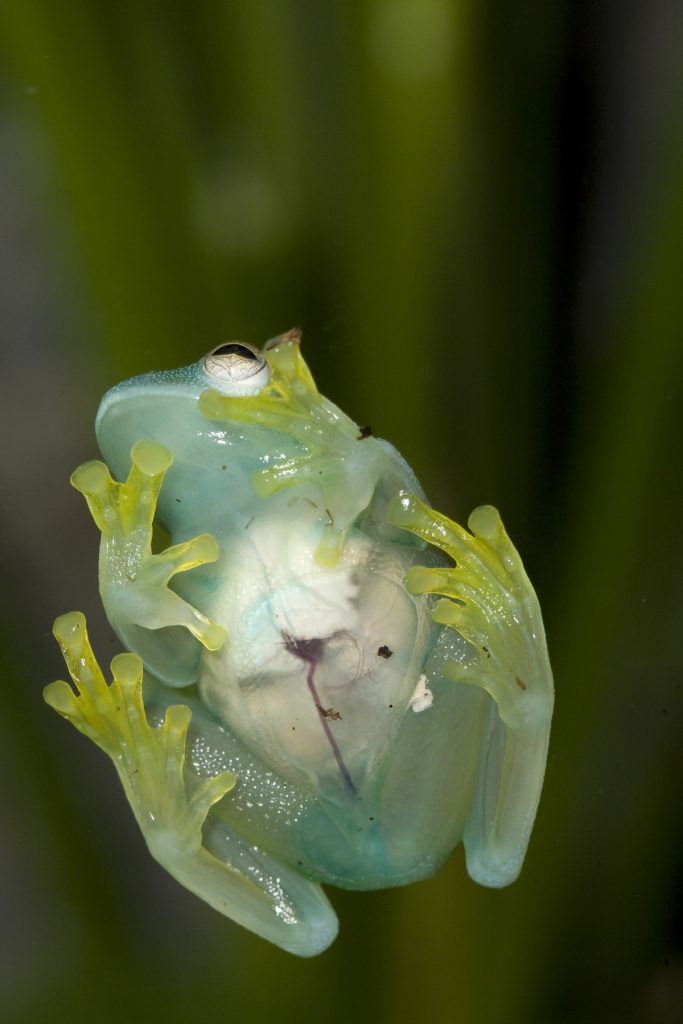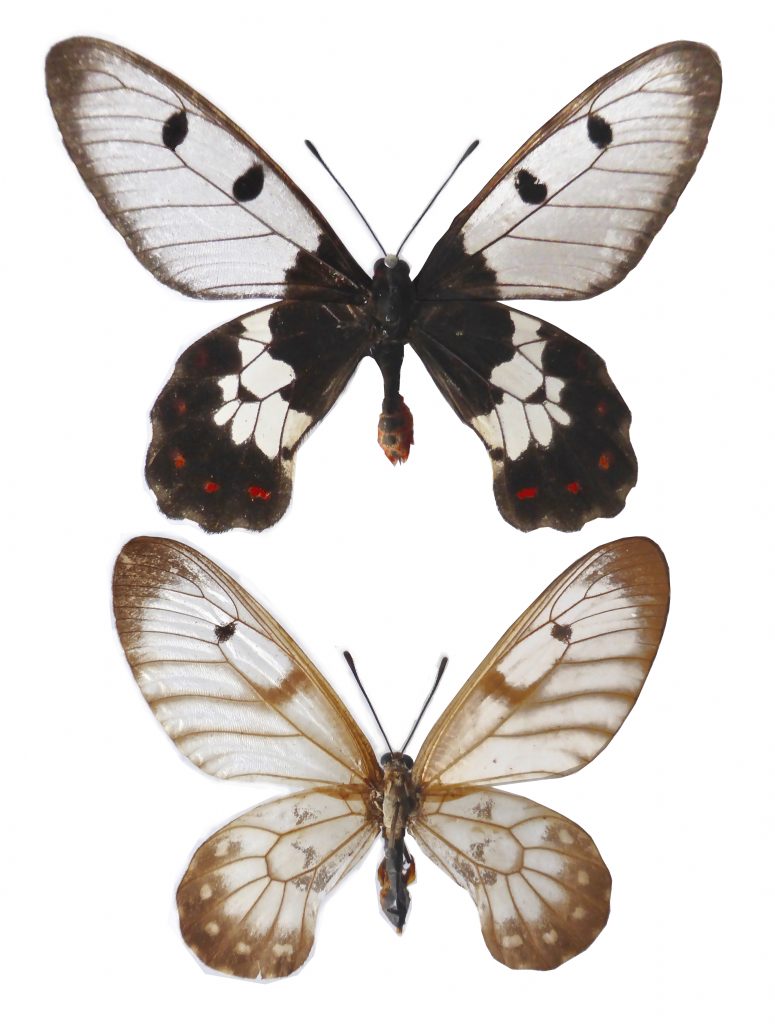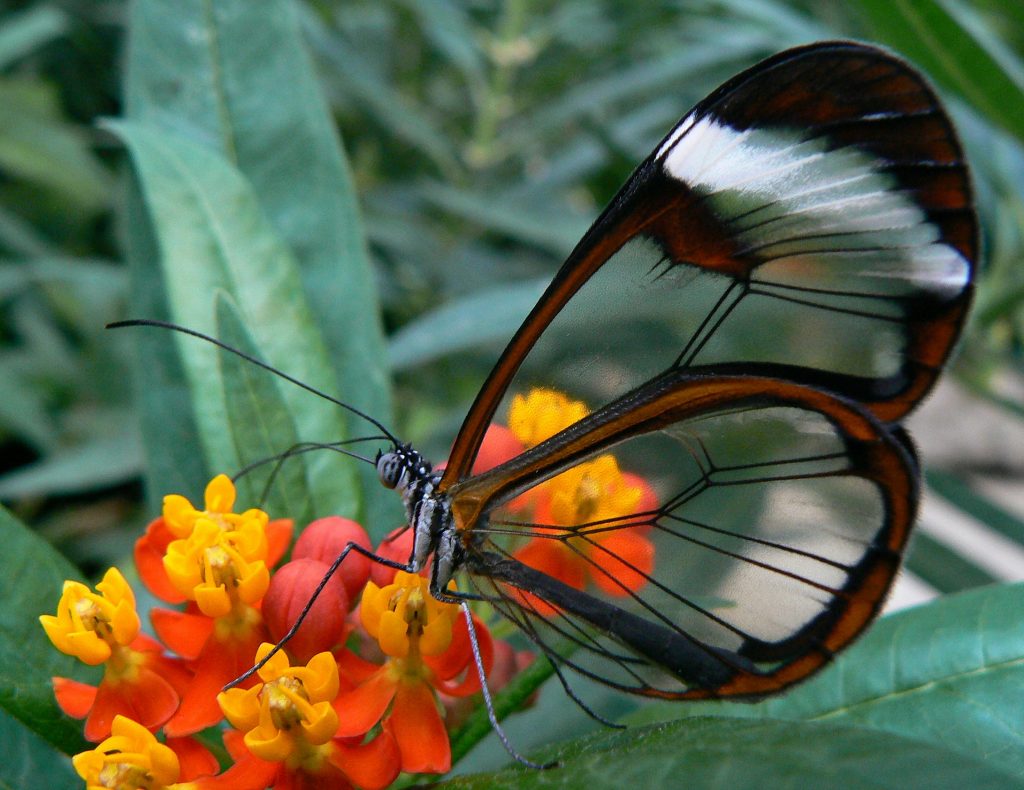Christmas Eve 2020: There haven’t been enough frog stories here this year and this December 21, 2020 essay by James B. Barnett, postdoctoral fellow inbBehavioural ecology at McMaster University (Ontario, Canada), for The Conversation helps fill that void,
…
Transparency may seem like the simplest form of camouflage, but in the last year, research has revealed new complexities behind what some animals do to vanish into their surroundings.
In my research, I have experienced first-hand how effective and sophisticated transparency really can be. That story begins on a dark night in the pouring rain in the thick of French Guiana’s tropical rainforest.
.. we had been searching for: a tiny glass frog (Teratohyla midas), only a couple of centimetres long. These bizarre frogs have transparent skin that lets us look directly at their intestines and bones — even at their beating hearts.
Here’s an image of a glass frog, from an October 11, 2011 posting by Lindsay on the amphibianrescue.org blog,

Barnett’s December 21, 2020 essay explains why animals might find transparency a useful survival mechanism,
Glass frogs are an amazing sight but seeing one raises an interesting question: what’s the point of having transparent skin if your predators can still see you, or your internal organs?
…
… as light moves between transparent materials it can be bent and scattered. Think about how a straw in a glass of water appears to bend. This is refraction, and results from the different ways that light moves through air and water.
An animal’s body is made up of many organs and tissues, each with a different thickness, structure and chemical makeup. For the animal to be transparent, light must not be reflected, absorbed, scattered or refracted as it travels through each of these different layers.
…
On land, transparency is much rarer, but we are now learning that it can be very effective, sometimes in unexpected ways.
… [glass frogs’] transparency provides yet another form of camouflage. Unlike butterflies and moths with their transparent wings, these frogs have all of their internal organs on show, preventing true transparency. Instead, by combining their transparent underside with a green topside, the frogs become translucent: allowing some light through but not showing a clear image.
Their green colouring is a close match to that of a generic leaf, and the trick of translucency allows the frog to brighten or darken in keeping with the leaves around it. What’s more, the frogs’ legs are more translucent than their bodies, providing an extra advantage from a process called “edge diffusion,” further blending frog and leaf together in the eyes of its predators.
…
This is an interesting essay illustrated with images of ‘transparent’ species, including a ghost shrimp.
I have one hesitation, the banner image for Barnett’s essay features what’s identified as a glasswing butterfly but Barnett references clearwing butterflies in his text. I did a brief search to see if the names are interchangeable and the answer is often but not on Wikipedia.
The search ‘clearwing butterfiles’ will lead you to this Wikipedia entry on Cressida cressida, the clearwing swallowtail butterfly or big greasy, which is found in northern Australia, New Guinea, Maluku, and Timor,

Here’s the glasswing butterfly (Greta oto),

You can find the Greta Oto Wikipedia entry here. The butterfly is found mainly in Central America and the northern region of South America.
To sum up, I think the term ‘clearwing’ is used to describe a lot of butterflies that have transparent or translucent wing qualities, as well as to a specific butterfly and ‘glasswing; is used only for the Greta oto. (If anyone knows more, please feel free to let me know with a blog comment.)
Just after I stumbled across Barnett’s essay, I came across some research involving transparent worms. I’ve included a link to the research but do note that this is not about their ‘transparent’ quality but about how scientists have used different types of light to observe various metabolic processes. Here’s the December 22, 2020 Rice University news release on EurekAlert.
Finally,Joyeux Noël!